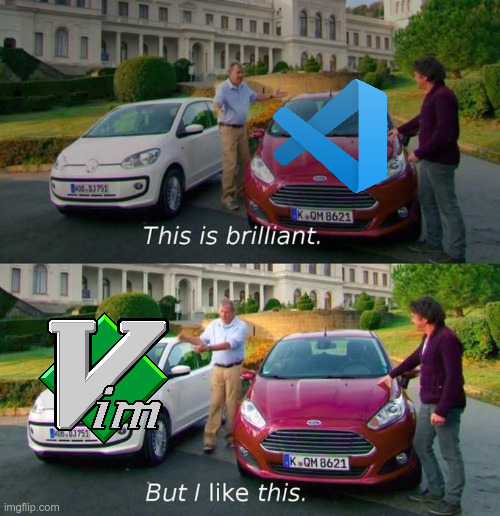this post was submitted on 09 Jan 2025
19 points (95.2% liked)
linuxmemes
28151 readers
588 users here now
Hint: :q!
Sister communities:
Community rules (click to expand)
1. Follow the site-wide rules
- Instance-wide TOS: https://legal.lemmy.world/tos/
- Lemmy code of conduct: https://join-lemmy.org/docs/code_of_conduct.html
2. Be civil
- Understand the difference between a joke and an insult.
- Do not harrass or attack users for any reason. This includes using blanket terms, like "every user of thing".
- Don't get baited into back-and-forth insults. We are not animals.
- Leave remarks of "peasantry" to the PCMR community. If you dislike an OS/service/application, attack the thing you dislike, not the individuals who use it. Some people may not have a choice.
- Bigotry will not be tolerated.
3. Post Linux-related content
- Including Unix and BSD.
- Non-Linux content is acceptable as long as it makes a reference to Linux. For example, the poorly made mockery of
sudoin Windows. - No porn, no politics, no trolling or ragebaiting.
- Don't come looking for advice, this is not the right community.
4. No recent reposts
- Everybody uses Arch btw, can't quit Vim, <loves/tolerates/hates> systemd, and wants to interject for a moment. You can stop now.
5. 🇬🇧 Language/язык/Sprache
- This is primarily an English-speaking community. 🇬🇧🇦🇺🇺🇸
- Comments written in other languages are allowed.
- The substance of a post should be comprehensible for people who only speak English.
- Titles and post bodies written in other languages will be allowed, but only as long as the above rule is observed.
6. (NEW!) Regarding public figures
We all have our opinions, and certain public figures can be divisive. Keep in mind that this is a community for memes and light-hearted fun, not for airing grievances or leveling accusations. - Keep discussions polite and free of disparagement.
- We are never in possession of all of the facts. Defamatory comments will not be tolerated.
- Discussions that get too heated will be locked and offending comments removed.
Please report posts and comments that break these rules!
Important: never execute code or follow advice that you don't understand or can't verify, especially here. The word of the day is credibility. This is a meme community -- even the most helpful comments might just be shitposts that can damage your system. Be aware, be smart, don't remove France.
founded 2 years ago
MODERATORS
you are viewing a single comment's thread
view the rest of the comments
view the rest of the comments

I would argue that vim is fantastic for a lot of editing and coding tasks, just not all of them.
Where it utterly fails is with deep trees of files in codebases, like you see in Java or some Javascript/Typescript apps. Even with a robust suite of add-ons, you wind up backing into full-bore IDE territory to manage that much filesystem complexity. Only difference is that navigating and managing a large file tree w/o a mouse is kind of torture.
Fuzzy finding really shine for this use case, no need for a mouse.
Once I got used to single-directory filetree browsing plus fuzzy finding, I have never been able to comfortably use a traditional filetree anymore. most of them are not designed for efficient keyboard use (vscode and intellij at least) and don't really help understanding the structure of the project imo (unless there arent that many files). For massive projects I find it easier to spend the initial effort of learning a few directory names and the vague structure using oil.nvim, and then eventually I can just find what I need almost instantly by fuzzy finding.
File-based navigation is often inefficient anyway (symbolic navigation is much better when you can), but if you do need it, that's what fuzzy finders are for. Blows any mouse-based navigation out of the water.
The only time a visual structure is useful is when you are actually just interested in learning how things are structured for whatever reason, but for that task,
treeworks just fine anyway.